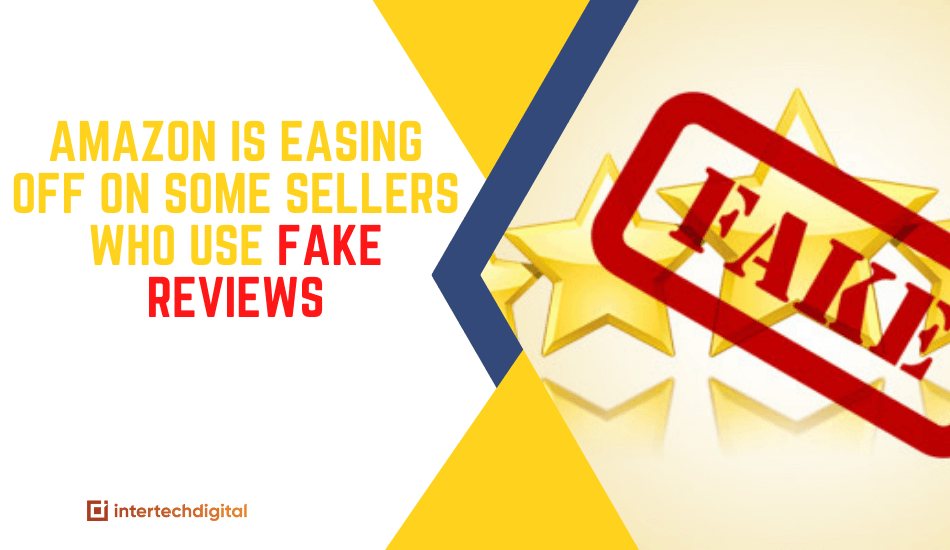Some Amazon merchants are attempting to escape account bans as a result of fraudulent reviews. Instead, Amazon is just making it more difficult for buyers to locate the products in question on the platform.
This is referred to as “lowering discoverability” by Amazon.
For some of these vendors, there is good news. The loss in discoverability can be reversed for those who are not guilty of review manipulation, as well as guilty sellers who appeal with a compelling Plan of Action.
But first, it’s crucial to understand the difference between a false Amazon review and a review that has been manipulated. Continue reading to see why Amazon isn’t suspending the impacted accounts outright, as well as what sellers should do if their products’ discoverability is harmed.
Read More: Guide to Amazon Sponsored Products Ads

What is the Difference Between a False Review and a Review that has been Manipulated on Amazon?
Customer reviews on Amazon are subject to very strict guidelines. In short, third-party merchants are not permitted to provide buyers incentives in exchange for a positive rating. Furthermore, Amazon sellers are unable to obtain phony ratings, evaluations from friends and relatives, or reviews from employees.
The list of activities that are prohibited is long and incomplete. Bad actors are constantly devising new ways to sway customer reviews of their own – or their competitors’ – products. At the end of this post, you’ll see a selection of Amazon’s guidelines.
Many brand owners, unfortunately, have been obliged to disregard these guidelines. They seek feedback from their aunt’s reading club. They hire a company in another country to upvote their best reviews and downvote their competitors’ worst ones. They offer PayPal refunds in exchange for 5-star reviews with images.
Amazon has previously responded to review manipulation and fraudulent reviews by:
- The account owner has been warned to stop using it.
- The account owner was notified and given 72 hours to submit a Plan of Action; if the POA was accepted, the account was not suspended.
- Allowing an appeal and suspending the account
- Appeals were not accepted if an account was suspended a second time for review manipulation.
Read More: What Is Amazon FBA and How Does It Work?
What is it that is Lowering Discoverability?
Instead of suspending accounts, Amazon has recently reduced the discoverability of ASINs with bogus reviews.
Because inauthentic reviews were discovered, Amazon ensured that the products in question were not displayed in search results. Any advertising campaigns will also be throttled.
So, what’s next?
“We will continue to decrease discoverability of products displayed in search results and promotional channels until we can identify and remove reviews and, to the degree possible, reverse any unfair advantage accrued to products driven by such reviews.” Customers will still be able to find and purchase your products during this time,” according to a notice from Seller Performance regarding review abuse.
If there was an error in enforcement, the notice goes on to request an appeal.
Read More: How to Use Amazon’s New Impression Rank Report for Search Terms
Why is Amazon Acting in this Manner?
With the US Federal Trade Commission putting so much pressure on Amazon and other online platforms to remove phony reviews, it’s unexpected that Amazon would ease up on enforcement.
There are Several Reasons for this Strategy’s Implementation:
- Amazon might not be certain the merchant did it. It’s possible that the source of the phony reviews is suspect, or that the unethical behaviors were perpetrated by a competitor.
- Amazon may be certain that the seller did it, but they see this as a halfway place between doing nothing and entirely blocking the account. This would allow the vendor to have a better understanding of the rules and fix their mistakes.
- Amazon may not be interested in removing merchants who manipulate reviews on a regular basis, but they feel compelled to do it in order to appease government officials.
If a Vendor is Faced with this Penalty, what should they do?
If a seller receives an Amazon Seller Performance notification about “lower discoverability,” they must act quickly to protect their account.
First and foremost, merchants must cease behaving badly. They can’t just believe their account and staff aren’t guilty. Account owners frequently are unaware that a brand manager, team member, friend, or family member has written or obtained phony reviews.
Next, any services that may have acted on behalf of the vendor must be stopped. This entails gathering a file of relevant data, such as emails terminating service, payment records, and previous emails. As part of the appeals process, Amazon may request certain papers.
A Plan of Action must be clear, comprehensive, and convincing when appealing to Amazon. There can’t be any omissions. Even if a seller is certain they did not violate the Review Manipulation regulations, they must explain why and how they avoided doing so.
Review Seller Central’s Definition of Manipulation
According to Amazon’s Seller Central Help, the following are prohibited:
- A seller may write a review for their own or a competitor’s product
- In exchange for a review of their product or a competitor’s goods, a seller offers a third party a monetary incentive, a discount, free products, or other compensation. Using services that offer customer reviews, websites, or social media groups is an example of this.
- After a buyer publishes a review (including reimbursement via a non-Amazon payment method), a seller offers a refund or reimbursement and asks the buyer to edit or remove the review, either before or after the refund or reimbursement. This could be accomplished through Amazon buyer-seller communications, direct interaction with customers, or the use of third-party services, websites, or social media groups.
- A vendor makes use of a third-party service that provides free or discounted products in exchange for a positive review (for example, a review club that requires customers to register their Amazon public profile so that sellers can monitor their reviews).
- A review of the seller’s product or a competitor’s product is posted by a family member or employee of the seller.
- Negative ratings are diverted to the seller or to another feedback mechanism, while good ones are sent to Amazon.
- A vendor uses review aggregation to build a variation relationship between products in order to manipulate reviews and enhance a product’s star rating.
- In the product packing or shipping box, a seller places a request for a favorable Amazon review or an incentive in exchange for a review.
- A vendor uses a customer account to create or edit a review for a product that is not his or hers.




